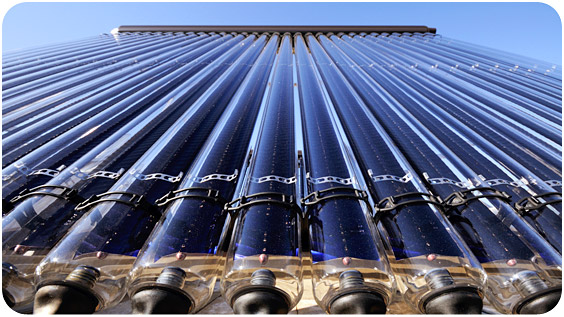
If you are currently looking to replace your old boiler or heating system, then maybe you should take a look at some of these options. Of course, moving to greener energy can help reduce our collective carbon emissions but it also comes with some state and federal financial incentives that help reduce the overall cost.
Biomass Boilers and Wood Chip Burners
The US has pretty much all it needs to create a thriving biomass industry. In recent years we have seen the creation of biomass power plants that provide large amounts of electricity to the grid as well as refineries that are developing and producing biofuels. When it comes to home heating, changing to a smaller scale biomass boiler or a wood chip burner can cut costs and reduce your carbon footprint.
At first sight, the act of burning wood might not seem 100% carbon-friendly but because trees and woodland are being replaced this offsets the amount of CO2 such installations produce. This basically makes them carbon neutral. Biomass boilers work the same way as your old boiler, the difference is that they burn wood rather than gas. They are ultra-efficient and easy to maintain.
According to Biomass Magazine:
“When used in modern high-efficiency boilers, biomass fuels can lower the cost of heat by 40 to 60 percent when compared to heating oil.”
Using the Sun for Home Heating
Another heating system that homes and businesses are turning to is solar thermal. This is different from the solar panels you see for creating electricity in that they absorb the warmth from the sun to provide hot water and internal heating.
The great news about solar thermal is that it is relatively cheap and simple to maintain. While the majority of Americans currently use it as a way to heat something like a swimming pool, the technology has huge potential for being used in the home. It is highly popular in areas like China and Europe and is a pure renewable source of energy. Amazingly, it can also be used for cooling too, with a device that works similarly to a refrigerator.
This is an area of renewable energy generation that is developing quite nicely in the US and you can also get combined systems that not only produce solar thermal heat but also create electricity. The other point is that the return on investment on these installations in the many US states is pretty good.
Geothermal Can Keep You Warm
Another awesome technology that many states are providing incentives for is the geothermal heat pump. While they do require a small amount of external electricity to run, these installations are highly efficient and very low maintenance. They may be slightly more expensive to buy and install but the longer-term benefits with savings on fuel bills are very good.
Again, this works like a reverse refrigerator, basically drawing the heat from the ground and transferring it to a machine that then compresses and increases the temperature which is fed into your home or business. The network of pipes that form the major part of the installation will need to go into the ground around your property so you will require enough acreage for that. You also have to have a well-insulated home. Ground source heat pumps provide a low constant temperature that is affected when a home has too many nooks and crannies. Despite these caveats, there are still plenty of benefits:
- The systems are more durable than traditional AV systems and require less maintenance.
- They come with various incentives from state and federal sources that help reduce the cost of installation.
- They can reduce fuel bills by as much as 40 to 70% depending on the system installed and what you are replacing.
Incentives for Green Home Heating
One of the problems with switching to more renewable home heating for both businesses and homeowners is the upfront cost. There’s a general perception that it’s expensive to go green. There are, however, plenty of incentives around to help. There’s the federal tax credit that knocks 30% off the cost of installations such as solar thermal, biomass boilers, and heat pumps.
There are also incentives in each state depending on their legislation. Many now have a renewable portfolio standard that dictates how much each state will be produced from renewable sources shortly. A large number of energy companies provide rebates for households and businesses installing technology such as geothermal heat pumps.
You can find out which incentives are available in your state by visiting the DSIRE website.
Cost Vs Saving the Planet
Of course, while we all want to help save the planet, most Americans want some value for their hard-earned bucks. It’s not a simple question of just getting your checkbook out. The problem is that many people see the upfront cost without seeing the long term picture. Many of these greenways of home heating are actually low maintenance and should last a good deal of time. The average lifespan of a geothermal heat pump could be 25 years and once the initial investment has been paid off (usually between three and five years) it provides an extremely low-cost way of home heating.
Not only that, those who have heat pumps or solar thermal installed are not at the mercy of the big energy companies so won’t be affected if prices are suddenly hiked. So, if you are thinking about changing your home heating shortly, it could pay to look at some of the great new renewable technologies out there. Check out the local incentives your state and the federal government provide and work out how much you’ll benefit over the next 25 years.
You might be pleasantly surprised.
If you have to resist any questions, please contact us!

About the Author
Jen is your go-to guru for crafting a cozy, green cocoon. 🪴 Her dive into sustainable building wasn’t just about saving the planet—it started as a mission to make family movie nights eco-friendly (and to ensure the popcorn was the only thing getting heated!). With a knack for breaking down the jargon, Jen turns eco-lingo into everyday language. Swing by the Green Living blog for a mix of earth-loving advice and home improvement hacks. Whether you’re just dipping your toes into green waters or you’ve been swimming in the deep end of DIY projects, Jen’s here to guide, giggle, and remind you that every eco-choice is a step towards a planet that thanks you… and maybe even sends a rainbow your way! 🌈
